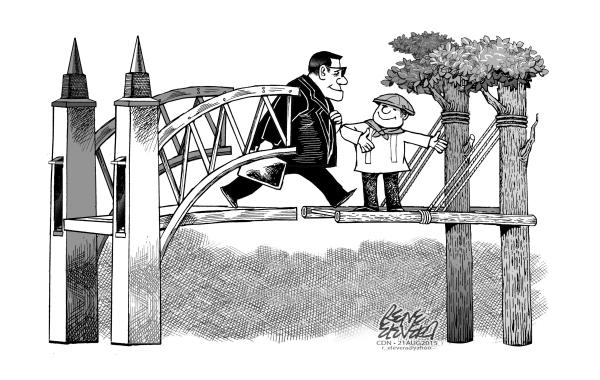
An Associated Press (AP) story on how Asia’s infrastructure gap threatens to slow down its growth gains currency in light of the Asia-Pacific Economic Cooperation (APEC) meetings in Metro Cebu.
Cebu has been caught up in preparations for hosting the presence of 3,300 delegates and companions for about 100 meetings spread over three weeks, starting tomorrow.
Aside from security, other considerations included suspending all road projects for the duration of the meetings, closing off certain streets to allow unhampered travel of the delegates to and from the venues and even ordering health authorities to monitor the food being served to the delegates.
Try as they might, the cities of Cebu, Mandaue and Lapu-Lapu know the physical limits of their roads and the increasing volume of vehicles.
The budget release this year for multiple road rehabilitation and drainage projects in Mandaue City was a blessing and a curse. To solve traffic congestion, road widening requires having to endure terrible traffic.
Mandaue City is considered the “heart of Metro Cebu” since all roads to and from Cebu City and Lapu-Lapu City pass through them, so sacrifices had to be made not just by city residents in three cities but by business enterprises as well.
With most national road projects expected to be finished in January 2016 still, APEC organizers have arranged for a temporary respite, requiring contractors to suspend work and clear out heavy equipment for the next few weeks.
To put things in perspective however, it’s not as if Cebu and the rest of the country are alone in dealing with monster traffic.
Other countries like India and Thailand labor with this as well and have dedicated billions of dollars to solve it.
The construction boom fueled by private developers wasn’t matched with the road and telecommunications infrastructure needed by both the national and local governments.
The Bus Rapid Transit System (BRT) came after years of lobbying when the idea was first raised by Cebu City in the the 1990s. Still, it’s better late than never. And its expected success may encourage Manila and other governments to tap the system as an effective, less polluting form of mass transportation.
The infrastructure gap may provide ripe grounds for promoting alternative eco-development planning that seeks to blend and augment, rather than break down, existing road conditions with an eye towards preserving heritage sites and encouraging people to walk and bike rather than rely too much on motor vehicles.
Lobbying for a sustainable metropolis that replaces the need to build skyscrapers and flyovers that obscure and take down landmarks for wider, tree-lined roads, and more bike routes is a course worth pursuing among local leaders.
What we need may not be more infrastructure, but better built, better planned and sustainable infrastructure.